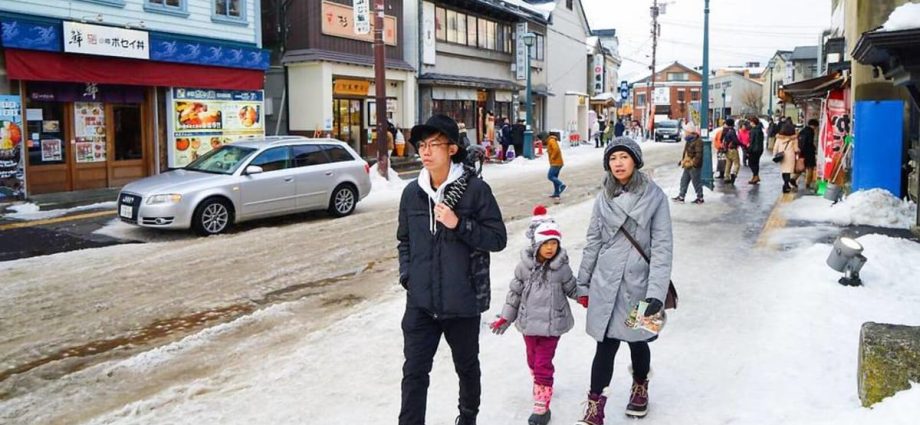
JAPAN’S MIDDLE CLASS IS GETTING SQUEEZED
But most pressing is the risk of pricing out locals. On a trip last season to Rusutsu, a Hokkaido resort not far from Niseko, I was shocked to discover that lift prices had risen some 35 per cent to ¥8,800. This year they’ve gone up a further 31 per cent to ¥11,500.
For a Japanese resort, that’s quite the outlay, even if you’re making Niseko money. You would need to work more than 10 hours at the minimum wage in Tokyo, which the government has recently been proudly advertising on trains, to afford that – but just five hours at the minimum wage in Australia (not a wonder Japan sees so many Aussies).
On the other side, even that price is a fraction of what it costs in a US resort village like Vail, Colorado, suggesting there’s room to squeeze tourists more.
Ski shops in Kanda-Ogawamachi, Tokyo’s mecca for winter sports goods, are filled with travellers from Hong Kong, the US and Australia; locals seem a minority, with the number of skiers and snowboarders among them having dropped more than 75 per cent from its 1998 peak. As prices increase, Japan’s middle class is getting squeezed.
Some are trying different routes. During a recent visit to Appi, an up-and-coming resort in the Iwate Prefecture town that also hosts a campus of the elite British school Harrow, I was intrigued by the option to buy a limited-edition “Black Pass”.
The ¥33,000 lift ticket offers early access to the slopes, priority lift lanes and use of a piste only accessible by snowmobile. (As a journalist paid in yen, I stuck with the regular tickets, which are a reasonable ¥7,000 even after a hefty price hike this year.)
Other resorts have taken to offering residents from nearby towns discount tickets, or those that work out cheaper for the type of quick trips locals are likely to favour.
This kind of upselling is something that Japan, where ostentatious displays of wealth are less celebrated, will have to get used to. But you don’t have to visit Niseko to see this in action. Already in Tokyo, you can spot places that are charging “inbound prices” (i.e., those for tourists), which is leading some to call for a dual-pricing system that would offer cheaper services for locals.

